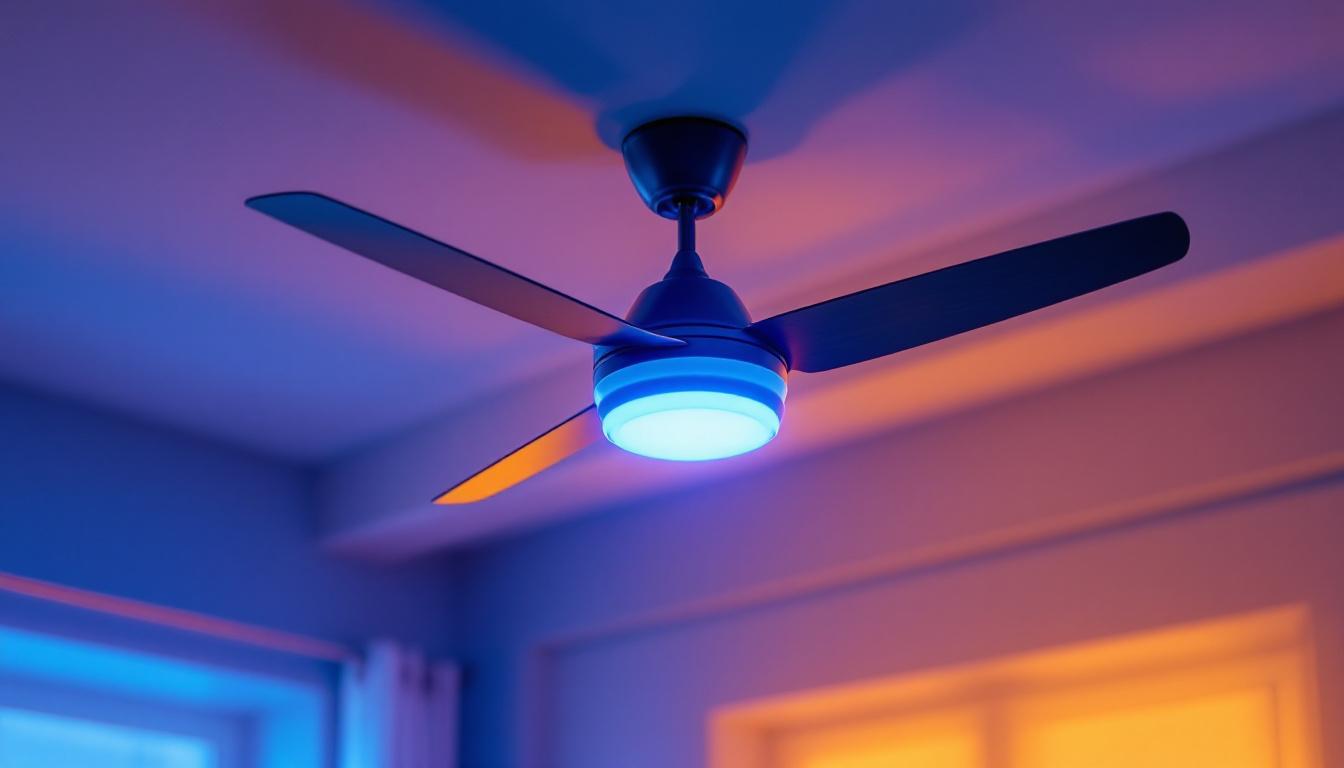
LED technology has revolutionized the lighting industry, offering numerous benefits over traditional incandescent and fluorescent lighting. For lighting contractors, understanding these advantages is crucial to providing clients with efficient, cost-effective, and sustainable lighting solutions.
LED lights consume significantly less energy than conventional bulbs, often using up to 75% less electricity. This reduction translates into lower utility bills for clients and a smaller carbon footprint, aligning with growing environmental regulations and consumer demand for green solutions. Additionally, many utility companies offer rebates and incentives for the installation of energy-efficient lighting, further enhancing the financial appeal for clients considering an upgrade.
Moreover, LEDs boast an impressive lifespan, frequently lasting 25,000 to 50,000 hours or more. This longevity reduces maintenance costs and replacement frequency, which is particularly valuable in commercial and industrial settings where lighting access can be challenging and costly. In fact, the long lifespan of LEDs means that contractors can often provide warranties that extend beyond the typical lifespan of traditional bulbs, offering clients peace of mind and enhancing the contractor’s reputation for reliability.
Energy efficiency remains the primary selling point for LED lighting. Unlike incandescent bulbs that convert most energy into heat, LEDs emit very little heat, making them safer and more efficient. For contractors, this means recommending lighting solutions that can drastically cut energy consumption in residential, commercial, and industrial projects. Furthermore, the ability to integrate LEDs with smart lighting systems allows for even greater energy savings through features like dimming, motion sensors, and automated controls that adjust lighting based on occupancy or time of day.
Clients often seek quick returns on investment, and LED lighting delivers through reduced energy bills and minimal upkeep. Lighting contractors who can quantify these savings with real data and case studies will build stronger trust and credibility with their clients. By showcasing examples of previous projects where LED installations have resulted in substantial cost reductions, contractors can effectively illustrate the tangible benefits of switching to LED technology, making a compelling case for their services.
LED lights are solid-state devices, meaning they are more resistant to shock, vibration, and external impacts compared to traditional bulbs. This robustness is especially beneficial for outdoor lighting, construction sites, and industrial environments where lighting fixtures may be exposed to harsh conditions. The ability of LEDs to perform well in extreme temperatures, whether hot or cold, further enhances their versatility and reliability across various applications.
Lighting contractors should emphasize the reliability of LEDs in challenging environments, highlighting their ability to maintain consistent performance over time without frequent failures. Additionally, the low thermal output of LEDs contributes to their durability, as they are less likely to be damaged by heat-related issues that can plague traditional lighting solutions. This reliability not only ensures a safer working environment but also minimizes downtime and disruptions for businesses relying on consistent lighting, making LEDs an attractive option for contractors looking to provide long-lasting solutions to their clients.
Choosing the appropriate LED lighting solution requires a deep understanding of the project’s requirements, including the environment, lighting purpose, and client preferences. Lighting contractors must consider factors such as brightness, color temperature, beam angle, and fixture compatibility. Additionally, understanding the latest advancements in LED technology can further enhance the selection process, allowing for more efficient and tailored lighting solutions that meet the evolving needs of various spaces.
Brightness in LED lighting is measured in lumens, not watts. Lighting contractors should educate clients on this distinction to avoid confusion. For example, a 10-watt LED bulb can produce the same lumen output as a 60-watt incandescent bulb, providing the same brightness with much lower energy consumption. This shift not only contributes to lower electricity bills but also has a positive impact on the environment by reducing overall energy demand.
When selecting LED lights, it’s essential to match the lumen output to the space’s needs. Over-lighting can cause glare and discomfort, while under-lighting may reduce visibility and safety. Contractors should perform detailed lighting calculations or use lighting design software to optimize lumen levels. Furthermore, it’s beneficial to consider the specific activities that will take place in the space; for instance, areas designated for intricate tasks such as reading or crafting may require higher lumen outputs to ensure comfort and precision.
Color temperature, measured in Kelvins (K), influences the ambiance and functionality of a space. Warm white (2700K-3000K) creates a cozy, inviting atmosphere ideal for residential and hospitality settings, while cool white (4000K-5000K) enhances focus and visibility, making it suitable for offices, retail, and industrial areas. Understanding the psychological effects of color temperature can also aid in creating environments that foster productivity or relaxation, depending on the desired outcome.
Lighting contractors should guide clients in selecting the appropriate color temperature based on the intended use of the space. Additionally, tunable white LEDs that allow adjustable color temperatures are gaining popularity for their versatility. These fixtures can adapt to different times of day or activities, providing warm light for relaxation in the evening and cooler light during the day to promote alertness. This adaptability not only enhances user experience but also aligns with the growing trend of smart home technology integration.
LEDs offer a variety of beam angles, from narrow spotlights to wide floodlights. The beam angle affects how light is distributed across a surface. Narrow beams are perfect for accent lighting or highlighting architectural features, while wide beams provide general illumination. Understanding the spatial dynamics of a room can significantly influence the effectiveness of the chosen lighting; for instance, in a large open space, a combination of different beam angles may be necessary to achieve a balanced and functional lighting design.
Contractors must assess the spatial layout and lighting goals to select fixtures with suitable beam angles, ensuring efficient light distribution and minimizing wasted light or shadows. Moreover, the use of adjustable fixtures can provide added flexibility, allowing clients to change the direction of light as their needs evolve. This adaptability is particularly valuable in multi-purpose spaces, where the function may shift from a casual gathering to a focused work environment, requiring different lighting setups to accommodate each scenario.
Proper installation is critical to maximize the performance and lifespan of LED lighting. Lighting contractors should follow best practices to ensure safety, compliance, and optimal functionality.
When retrofitting LED lights into existing installations, contractors must verify compatibility with current fixtures, dimmers, and control systems. Not all LED bulbs work seamlessly with older dimmers, which can cause flickering or reduced dimming range.
Using LED-compatible dimmers and control modules is essential for smooth operation. Additionally, contractors should check the fixture’s heat dissipation capabilities, as inadequate heat management can shorten LED lifespan.
LED lighting typically operates on low voltage DC power, but many fixtures include built-in drivers to convert AC to DC. Contractors should ensure that drivers are correctly rated for the installation and that wiring meets local electrical codes.
Proper grounding, surge protection, and circuit protection devices are vital to prevent electrical hazards and equipment damage. Lighting contractors must stay updated on electrical standards and best practices to guarantee safe installations.
Although LEDs produce less heat than traditional bulbs, they still generate some heat that must be dissipated to maintain efficiency and longevity. Fixtures with adequate heat sinks or ventilation help prevent overheating.
Contractors should avoid installing LEDs in enclosed spaces without proper airflow unless the fixtures are specifically designed for such environments. This attention to thermal management prevents premature failure and performance degradation.
Smart lighting systems are transforming how spaces are illuminated and controlled. For lighting contractors, integrating smart LED solutions offers opportunities to add value and differentiate services.
Smart LED systems enable remote control, scheduling, dimming, and color tuning through apps or voice assistants. These features enhance user convenience, energy savings, and adaptability to changing needs.
For commercial clients, smart lighting can contribute to building automation and energy management strategies, helping meet sustainability goals and reduce operational costs.
While smart lighting offers many advantages, contractors must navigate challenges such as network compatibility, security concerns, and user training. Selecting systems that support standard communication protocols like Zigbee, Z-Wave, or Wi-Fi ensures interoperability and future-proofing.
Contractors should also provide clients with clear instructions and support to maximize the benefits of smart lighting technologies.
Even with their long lifespan, LED lighting systems require periodic maintenance to ensure continued performance. Lighting contractors play a key role in offering maintenance services and educating clients on care best practices.
Dust and debris can accumulate on fixtures, reducing light output and efficiency. Regular cleaning of lenses, reflectors, and heat sinks helps maintain optimal brightness and thermal performance.
Contractors should recommend inspection schedules tailored to the environment, particularly in industrial or outdoor settings where conditions may accelerate wear.
Common LED lighting issues include flickering, dimming inconsistencies, and color shifts. These problems often stem from driver failures, wiring issues, or incompatible controls.
Lighting contractors should be equipped to diagnose and resolve such problems promptly, minimizing downtime and client inconvenience.
LED lighting represents a significant opportunity for lighting contractors to enhance their service offerings, improve client satisfaction, and contribute to sustainable building practices. By mastering the technical aspects of LED technology, selecting appropriate products, ensuring proper installation, and embracing smart lighting innovations, contractors can position themselves as trusted experts in the evolving lighting landscape.
Staying informed about industry trends, technological advancements, and regulatory changes will enable lighting contractors to deliver cutting-edge solutions that meet the diverse needs of their clients, ultimately driving business growth and success.
Ready to take your lighting contracting business to the next level with LED expertise? Choose LumenWholesale for your lighting needs and gain a competitive edge with our top-quality, spec-grade lighting products. With unbeatable wholesale prices and no middleman markups, we offer the best value for your investment. Our extensive selection is designed to meet the highest industry standards, ensuring reliability and high performance for every project. Plus, with free shipping on bulk orders, you can enjoy premium lighting solutions at the best price, without any hidden fees or compromises. Elevate your service offerings and satisfy your clients by choosing Wholesale Lighting at the Best Value with LumenWholesale.

Discover innovative hacks for smart lighting contractors to optimize industrial light bulb installations.

Discover how fan switches for ceiling fans can revolutionize your lighting projects by enhancing efficiency and control.

Discover essential tips and expert advice for lighting contractors on selecting and installing shop exhaust fans.

Discover how outdoor lamp posts are transforming spaces with real-world success stories from lighting contractors.